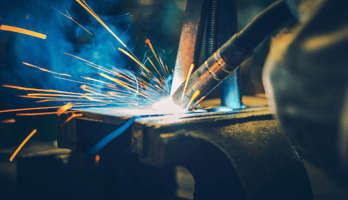Engineers and machining experts are in charge of managing the many variations in our modern...
Kryton Metals Blog
Precision Matters: Mastering Sheet Metal Tolerancing

Sheet metal tolerances describe the allowable variations in shape, size, and geometry for sheet metal fabrication. Metal tolerancing impacts project outcomes in multiple ways, including fit, functionality, manufacturing costs, and performance. Teams designing high-quality interchangeable parts require tight tolerances for better integration and easier maintenance.
This blog will explore sheet metal tolerancing, starting with a comprehensive introduction to the concept. We’ll also define the term, provide an overview of the process, and highlight its significance in various industries. Then we will delve into use cases, discuss ways to minimize risks and offer tips to correct tolerancing based on specific needs.
Sheet Metal Fabrication Overview
Metal fabrication involves many tools and techniques to transform sheet metal into usable products. Engineers and operators must collaborate during manufacturing processes, which include material preparation, part shaping, joining, and metal finishing.
Teams source raw metal and process it to meet specific industry requirements. Methods can involve casting, rolling, alloying, cutting, bending, and forging based on design parameters. Sheet metal fabrication and tolerancing are closely related, with much of the manufacturing process reliant on precision.
Fabricating sheet metal provides durable and accurate components for countless industries. However, many sectors require tight tolerances to ensure multi-faceted compatibility, successful functional testing, and standardized applicability.
Tolerancing Types
Let’s explore the three primary metal tolerancing categories in sheet metal fabrication:
#1. Essential Tolerances
Essential tolerances are those necessary for fundamental fit and function. Design requirements and industry standards typically define these parameters. The purpose of essential tolerances is to meet the dimensional and positional constraints without affecting product performance or integrity. Think of essential tolerances as the crucial foundations supporting a towering skyscraper.
#2. Functional Tolerances
Functional tolerances help ensure the proper functioning of metal parts under specific operating conditions. This metal tolerancing type considers environmental factors affecting performance, durability, and project costs. Teams can evaluate variations arising from manufacturing or implementation in real-world scenarios. For example, functional tolerances take effect to ensure that gears in a race car’s transmission system mesh perfectly, even under varying temperatures and speeds.
#3. Special Tolerances
Special tolerances are non-standard, customized, and specific to the design. They deviate from the norm, offering more leniency for innovation. This metal tolerancing type suits unique projects, inspection methods, and comprehensive control measures that ensure compliance. In aerospace engineering, special tolerances enable engineers to precisely tailor critical component dimensions to align with the innovative design.
Sheet Metal Tolerancing: Use Cases
Metal fabrication strategically uses raw materials and highly durable metals such as stainless steel. Project performance requirements and assembly quality often mean precise tolerancing to avoid manufacturing risks. Let’s look at three use cases for sheet metal tolerancing in precision fabrication.
Custom Metal Fabrication
Custom metal fabrication makes accuracy and fidelity essential. Consider intricate architectural structures and high-tech agricultural equipment. Precise sheet metal tolerancing is crucial for fabricating modified body panels, custom beams, innovative rivets, and other specialized components. Tight tolerances in custom manufacturing ensure optimal fit and functionality with tailored solutions that suit diverse industries.
Multi-Process Projects
Sheet metal tolerancing is critical for fabrication projects involving multiple manufacturing methods and assembly phases. A typical use case is the production of intricate equipment or components. These designs require precise tolerances for alignment, operations, and integration. Multi-process sheet metal fabrication also depends on the compatibility and interconnectivity of accurate tolerancing.
Correct Tolerance Determination
Ensuring the functionality and quality of finished products relies on proper tolerance determination. Use cases include custom instruments, high-tech devices, and agricultural machinery. Accurate determinations help teams comply with safety and manufacturing compliance requirements. They can also reduce production costs, shorten lead times, and improve part performance.
Risk Mitigation
Sheet metal tolerancing allows engineers to mitigate manufacturing risks for different industries and fabrication processes. Producing safety-critical components or specialized aerospace parts is a prime example. Teams can analyze and enhance tolerances to minimize failure and malfunction. This use case helps remove assembly misalignments, stop component interference, and decrease performance degradation.
Conclusion
Tolerances describe the allowable variables in a part’s dimensions, design, and geometry. Sheet metal tolerancing impacts a component’s fit, function, and manufacturing processes. Teams needing precise, high-quality outcomes benefit from the improved integration and decreased maintenance requirements of correct tolerance determination.
Sheet metal fabrication involves multiple processes and materials, including stainless steel and other alloys. Designing intricate components and manufacturing parts requires accurate tolerancing to ensure compatibility and industrial interconnectivity. Sheet metal tolerances allow engineers to innovate within specific parameters to meet or exceed production goals.
Contact KRYTON Engineered Metals for more information on domestic fabrication and sheet metal tolerances. Learn to innovate within your industry while adhering to production standards and project guidelines.



